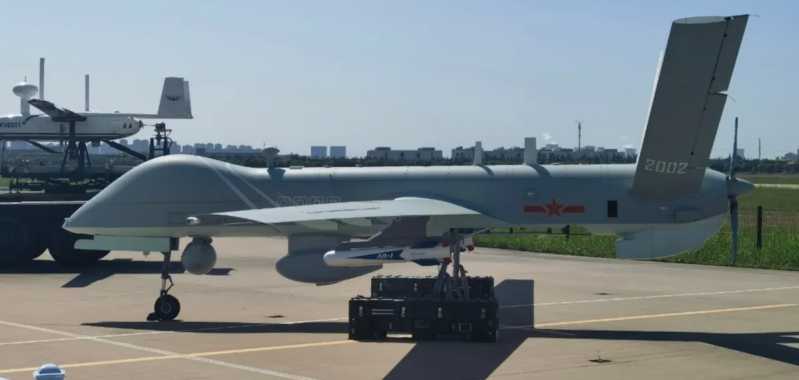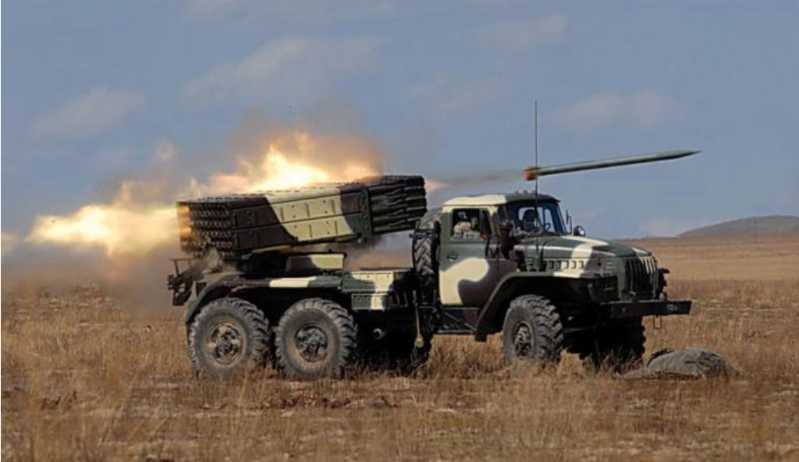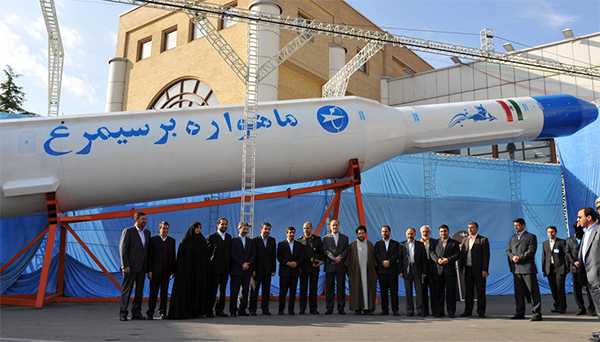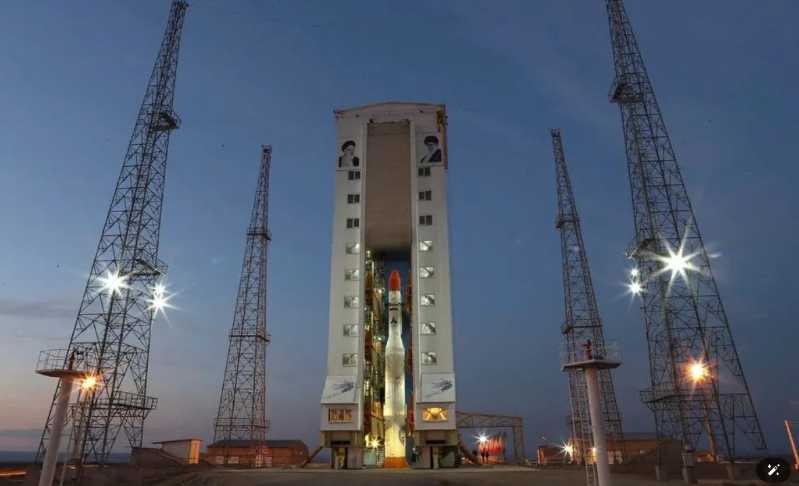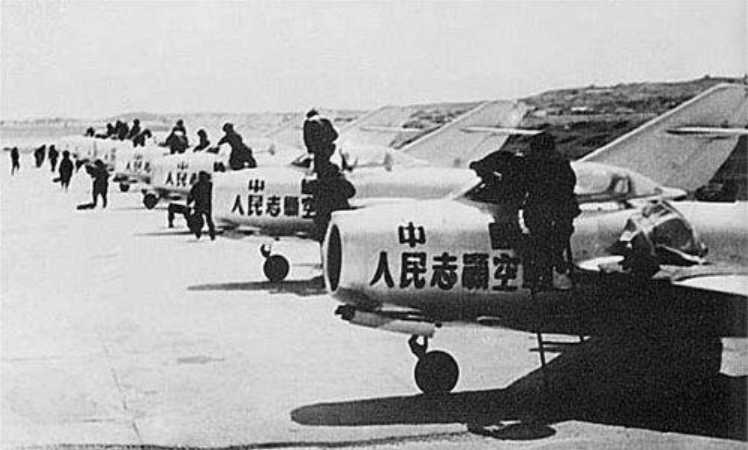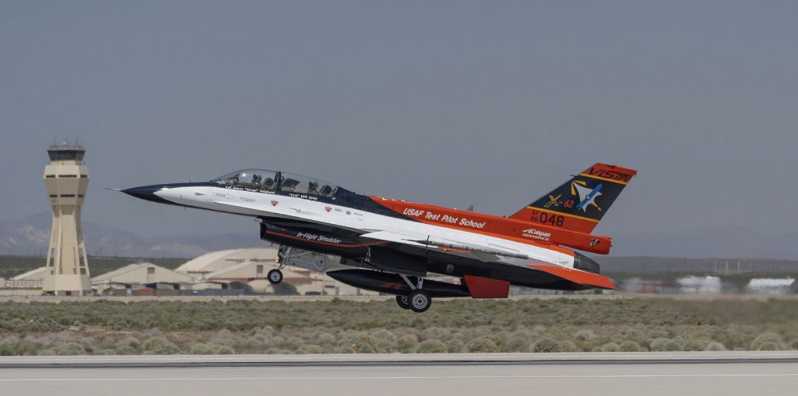Not long ago, the Army’s KVD-002 reconnaissance and strike drone made its first patrol in the Taiwan Strait, which caused quite a stir around the world. Taiwan and the mainstream media in the United States and the West reported and speculated on it extensively, and it once became a hot topic for the military, media, experts and scholars at home and abroad. Our military’s drones have been patrolling the Taiwan Strait for several years, and it is no longer surprising. Common models include TB-001, BZK-005, BZK-007 and "Wuzhen"-7, most of which belong to the Air Force combat sequence. In addition to the occasional dispatch of KVD-001 small reconnaissance and guidance drones by the Army since September last year, in conjunction with armed helicopters to visit the Taiwan Strait, it is really the first time in history that a large long-flight drone has cruised the Taiwan Strait. Is it to show off? Or to show presence? According to common sense, it seems a bit redundant. In today’s era of joint operations and information sharing, the intelligence information detected by the Air Force UAV can be distributed to other military services in real time. Is it necessary for the Army to send out UAVs to join in the fun? Is it to familiarize themselves with the battlefield environment? If that’s all, we can’t pull all the UAVs of various military services that may participate in the war in the future to fly over the Taiwan Strait for a few laps. Or is it to deter the Taiwan authorities? This is even more unreasonable, because our army has too many "trump card" weapons, and it is far from the turn of UAVs to "fill in the numbers". Every military operation, especially the military operation involving high-tech equipment, must have rigorous and meticulous practical considerations. As the only large fixed-wing reconnaissance and strike integrated UAV newly equipped by the Army with strategic and campaign significance, its first appearance in the Taiwan Strait is by no means a casual "stroll". Regarding the Western media’s statement that "the PLA is preparing for military reunification one step further", if we analyze it objectively and carefully, I am afraid it cannot be simply understood as the West exaggerating the "threat theory" again.
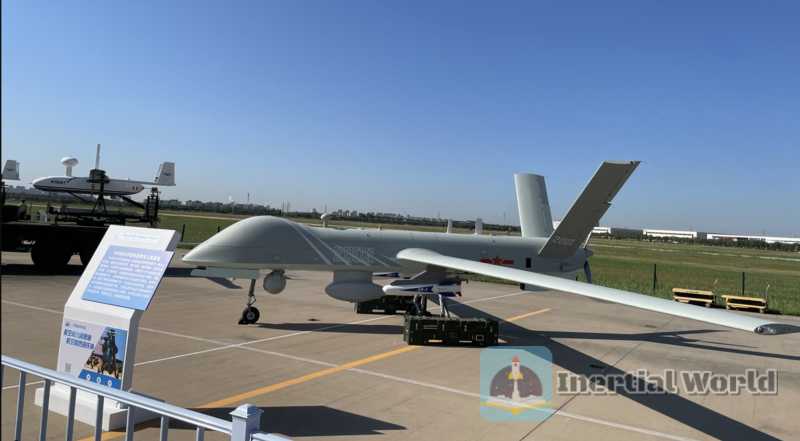
Locate coastal target information for beach landing
From the public information at the "6th China Tianjin International Helicopter" Expo, the KVD-002 reconnaissance and strike UAV is currently mainly equipped in the Army Group Army, including the Army Aviation Brigade/Air Assault Brigade under the Xinjiang and Tibet Military Regions. If it is believed that the main role of this aircraft is only to cooperate with Z-10, Z-19 and other armed helicopters in the Army Aviation/Air Assault Brigade, then it is too underestimated. The powerful strength of KVD-002 is seriously misunderstood, and the higher-level combat intentions of the Army are seriously misunderstood. The Army Aviation/Air Assault has long had KVD-001 to act as eyes and ears and provide relay guidance for Z-10, Z-19 and other armed helicopters. Therefore, it can be said with certainty that KVD-002 completely exceeds the role of Army Aviation/Air Assault. The military operations of any military service are driven by their own actual combat needs, and drone operations are no exception. The targets of the Air Force are fundamentally different from those of the Army in terms of region, type, nature, and importance. In the future war of unification, the Air Force will focus on high-value strategic and tactical targets such as the depth of the Taiwan Army and rear airports, ports, ammunition/fuel bases, and high-level command organizations, while the Army will pay more attention to the Taiwan Army’s coastal beaches and their shallow and deep obstacle systems, firepower points, artillery/missile/radar positions, communication hubs, and landing sites. Obviously, it is impossible for the Air Force drones to focus their reconnaissance on the Taiwan Army’s coastal beach defense system, just as the Rocket Force’s ballistic/cruise/hyper-supersonic missiles have no interest in tactical targets such as the Taiwan Army’s machine gun firepower points, rocket launchers, and mortar positions. The Army must make targeted preparations for landing operations based on its own combat needs. This is the real value of KVD-002 flying around Taiwan Island.
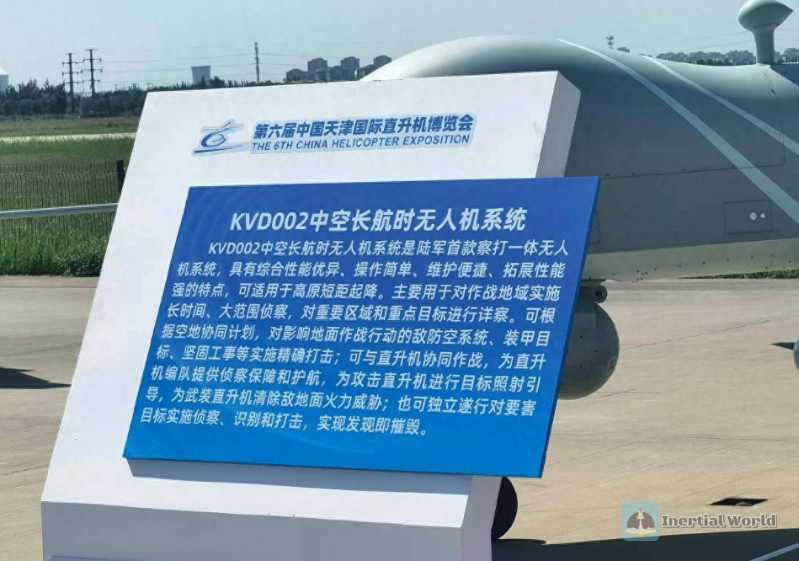
According to official media, the KVD-002 medium-altitude long-flight UAV system was already equipped in the Xinjiang Military Region’s aviation unit last year. As the Eastern Theater Command is responsible for responding to my country’s main strategic direction, the new equipment should be equipped earlier than other theaters. Referring to the scale of the US Army’s 12 MQ-1 "Predator" UAVs equipped in one division, the number of KVD-002 equipment in one group army of our army, including the Xinjiang and Tibet Military Regions, will definitely not be less than 12, and it is likely to gradually reach about 24. This aircraft is likely to be an improved and upgraded version of the Rainbow-4/4B reconnaissance and strike integrated UAV. It has very advanced performance, short-range takeoff and landing capabilities on plateaus, can cooperate with armed helicopters in combat, and is very easy to operate. Although the specific technical performance has not been officially announced, the main technical indicators such as maximum range, flight time, mounting, flight altitude and remote control distance should exceed the Rainbow-4B, and the comprehensive combat capability is close to or equivalent to the Attack-2 reconnaissance and strike integrated UAV equipped by the Air Force. my country’s famous Rainbow-4 series of UAVs have been exported to many countries and have participated in actual combat operations many times. After the Iraqi military received the Rainbow-4 UAV, it took off more than 100 sorties in less than a year without sufficient training, and launched more than 200 AR-1/2 air-to-ground multi-purpose missiles against terrorists and anti-government forces, with a hit rate of more than 95%, which shows its excellent performance. The Rainbow-4B has completed more than 30,000 hours of actual combat mission flight so far, and its reliability is extremely high.
A total of 14 beaches on the coasts around Taiwan Island, including Fulong, Feicui Bay, Toucheng, Yilan, Linkou, Luodong, Zhuangwei, Budai, Taoyuan Luzhu, Linyuan, Tainan, Jialutang, Nanjinshan, and Beijinshan, have been listed by the Taiwan military as the main defense areas for anti-landing operations. Most of them are distributed in the plains on the west coast of Taiwan Island, and a few are distributed on the east coast of Taiwan Island. The terrain is flat and open, which is very suitable for large-scale amphibious mechanized landing cluster assaults. Especially the western coast, facing the Taiwan Strait, can greatly shorten the sailing time of our landing formation. There are enough landing sites for our Marine Brigade and Army Amphibious Mechanized Combined Brigade to deploy, which is very convenient for our four major services of land, sea, air, and fire to organize joint fire assaults. Moreover, carrying out operations in the Taiwan Strait can minimize the interference of foreign enemies such as the United States and Japan. Taiwan’s economic center of gravity is mainly concentrated in the western plains. Once our army successfully lands, it can quickly control the overall situation and disintegrate the will of Taiwan independence resistance. The Taiwan military has long deployed a large number of elite anti-landing troops in the above-mentioned 14 landing areas. In wartime, it can dispatch 4 armored brigades, 3 mechanized infantry brigades, 2 aviation brigades and 2 marine brigades, a total of 11 main combat brigades, responsible for the task of defending the division. After decades of battlefield construction, a solid coastal defense position system with reinforced concrete fortifications as the main body has long been formed. Each beach and shallow depth that is convenient for landing has at least three or more defense positions, including main positions, reserve positions and auxiliary positions. According to the construction goal of "fortification of positions and underground fortifications", each position is equipped with firepower systems such as fortresses with cross-fire, artillery bunkers, anti-tank firepower points, and more than 30 types of explosive and non-explosive obstacles, which pose a great threat to our beach assault troops. KVD-002 can fully carry a variety of mission payloads such as the new generation radar, optoelectronic and electronic reconnaissance jamming pods that are standard on my country’s large drones, especially the new synthetic aperture radar, which has a strong ground reconnaissance capability, long detection distance and high accuracy. It can penetrate the covering/camouflage layer and see targets such as artillery, tanks, missiles hidden underground. It is very suitable for reconnaissance of the Taiwan military’s coastal beachheads and their deep underground or camouflaged targets.
Survey suitable landing areas for air assault
Three-dimensional landing will be the main style of our army’s future landing operations. Each group army has an aviation/air assault brigade. After determining the deep attack target, choosing a good landing site will become the key to the success or failure of the air assault operation. The strategic threat capability of the army is obviously not as good as that of other services such as the navy, air force, and rocket force. The main reason is that the army’s firepower has a short range, the force is close to the delivery, and it relies on ground advancement. It is blocked by the enemy layer by layer, which is not only slow, but also easy to cause heavy casualties. As far as our army is concerned, the only thing that can barely be called a strategic threat in terms of firepower is the PHL-191 long-range rocket launcher. In terms of manpower, it must be the Army Aviation/Air Assault Brigade, and it is a real strategic threat force. It is like a sword that pierces the enemy’s heart. No opponent dares to ignore its existence. As long as a few Army Aviation/Air Assault Brigades are deployed opposite the Taiwan Army, all strategic points in the rear depth of the Taiwan Army will inevitably feel precarious, because it is difficult for the Taiwan Army to determine when our Army Aviation/Air Assault Brigade will suddenly attack and which important targets to attack, forcing the Taiwan Army to increase the deployment density of anti-airborne forces in key locations such as rear-depth command organizations, logistics bases, missile positions, airports, ports, etc., effectively contain and weaken the scale of Taiwan Army’s coastal defense. As long as there is an Army Aviation/Air Assault Brigade, coupled with the strategic threat effect of our Air Force Airborne Army, the entire Taiwan Island will fall into the dilemma of "defenses everywhere, but difficult to defend everywhere".
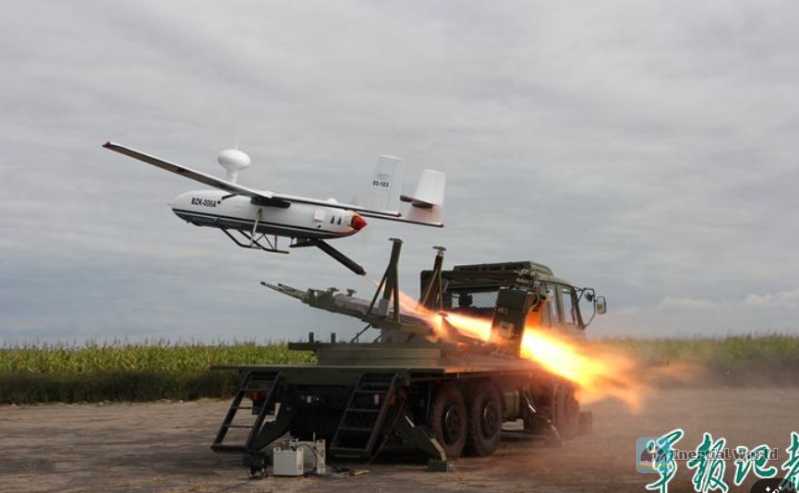
To this end, the Taiwan military had to search for more than 100 landing areas in the plains of the island that are convenient for our army to land by air/airplane. According to the size and danger level, a large amount of money was spent to carry out anti-air/airplane battlefield construction to varying degrees, and put forward the combat guiding principle of "first attack those who fall from the sky, then attack those who crawl up from the sea". Even if the coast is lost, the enemy who lands by air/airplane must be eliminated first. Since the "Nujiang Exercise" in 1957, the Taiwan military has made anti-air/airplane operations the focus of the joint exercises of the three services of the army, navy and air force every year, which shows how much it attaches importance to anti-air/airplane operations. In the commanding heights, airports, transportation hubs, command institutions and rear bases near the landing areas where our army may implement air/airplane landings of battalion scale or above, the Taiwan military has deployed dense firepower and obstacle systems, and pre-built bunker firepower points, transportation trenches, artillery and missile shelters as support points. If the Taiwan Air Force loses air superiority, all the medium and long-range air defense missile units on the ground, such as the Patriot-2, Sky Bow-1/2, and Sky Sword-2, will be responsible for anti-air and airborne combat missions while carrying out normal anti-airstrike combat missions. The Avenger short-range air defense missiles and Stinger/Mistral portable air defense missiles, GDF-002 35/M-42 40 anti-aircraft guns and 12.7mm anti-aircraft machine guns, etc., will be deployed in advance. Near the preset air/aircraft landing field, according to the principle of "concentrating firepower, intercepting from far to near, layer by layer", focus on attacking our air transport/helicopter group.
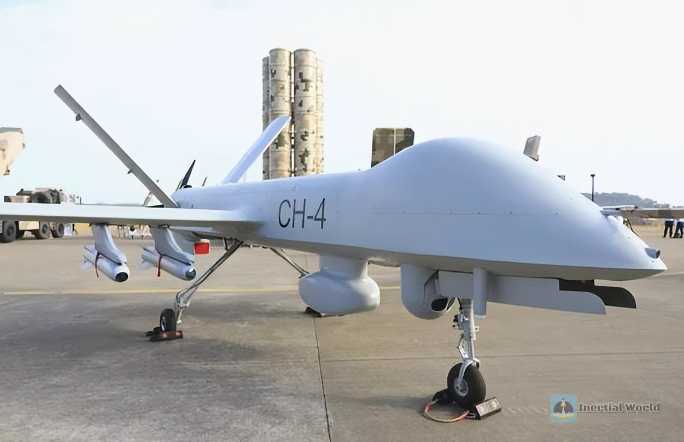
Once our army successfully lands, the AH-64E "Apache", A H-1W "Super Cobra" armed helicopters and OH-58D "Kiowa Warrior" reconnaissance helicopters immediately took off, coordinating with ground artillery such as the M-109 155/T-63 105 howitzers, "Worker Bee"-6/"Thunder"-2000 rocket launchers, T-86 120 mortars, and M-48H "Brave Tiger", M-60A3.CM-21 and other tank armored assault groups, launching a fierce attack on our air/airborne units and detachments, striving to annihilate us before we have a firm foothold. They also laid out triangular forks, stone piles, barbed wire, anti-tank trenches, and anti-infantry/tank mixed minefields and other obstacle facilities in advance on the main roads near our landing area, and coordinated the use of "TOW"-2B/"Javelin" Anti-tank missiles, T-75 60/81 mortars, M-40 106 recoilless guns and various light and heavy machine gun firepower are trying to suppress our landing troops in the air/airdrop field and make them unable to move, and resolutely block the attempts of our landing units and detachments to get close to the road with various assault vehicles. Strategic air/airdrop combat missions are mainly undertaken by our Air Force Airborne Force. The Army generally only undertakes campaign and tactical air assault missions in three-dimensional landing operations. The main combat objectives of the Army Aviation/Air Assault Units and detachments are usually to penetrate deep into the depth or rear of the Taiwan Army’s coastal defense, seize key points of the battle, cut off the enemy’s retreat, block the enemy’s reinforcements, or raid high-value targets such as Taiwan Army missile positions, helicopter landing fields, logistics bases and command agencies located in the depth or rear. The western plains of Taiwan are short and shallow, with the maximum depth from Nantou in the central part to Yunlin County being less than 40 kilometers, the maximum depth of the northern and southern plains being only more than 20 kilometers, and the urban area of Yilan County, the largest piece of plain land on the eastern coast, being less than 15 kilometers deep. Towns and residential areas in the plains of Taiwan are densely distributed, and there are very few training grounds available for the Taiwan military in peacetime. As long as the terrain near important military targets of the Taiwan military in the plains of Taiwan Island and key combat points such as bridges, commanding heights, and transportation hubs with strong control functions are clearly scouted, and the location, scale, distribution, and firepower use of the Taiwan military’s field anti-air/airdrop tactical training are understood, the intelligence needs of our army’s airdrop operations can be basically met. The KVD-002 drone flies around the island close to the coast of Taiwan, and can clearly see the multiple fortified positions and obstacle systems that have been built and cannot be moved and are exposed on the surface in the depth and rear of the Taiwan military. After many routine cumulative flights, it can easily identify the landing areas suitable for our army’s air assault and the distribution of Taiwan military forces, weapons deployment and obstacles in their vicinity.
Searching for traces of high-risk weapons for long-range assaults
The Taiwan military has a large number of so-called high-risk weapons with "preemptive counterattack" and "source strike" capabilities. In terms of air defense, the most advanced F-16V fighter jets of the Taiwan military are at best comparable to our J-10C in combat effectiveness, and are not capable of fighting against our powerful J-16 and fifth-generation J-20/35 stealth fighters. Therefore, the Taiwan military has never used air superiority operations as the main means to seize air superiority, but instead relies on its large number of ground-based air defense missile systems to adopt an asymmetric warfare method of "ground-to-air control", which the Taiwan military self-deprecates as a "hedgehog" or "porcupine" warfare method. At present, Taiwan’s medium- and long-range air defense missile network includes the long-range US-made "Patriot"-2/3, the self-made "Sky Bow"-3/3 extended-range type and the US-made "Standard"-2 ship-based system, with a maximum range of 100-200 kilometers and a maximum firing height of about 20,000 meters. The medium-range ones include the self-made "Sky Bow"-2 and the "Sky Sword"-2 system for both land and ship use, with a maximum range of 50-80 kilometers and a maximum firing altitude of 10,000-15,000. In October, the Taiwan military introduced a new air defense plan, planning to add 12 "Sky Bow"-3/3 extended-range air defense missile positions throughout Taiwan by 2026. Relevant technicians, weapons and equipment, construction equipment and building materials are currently being prepared in full swing.
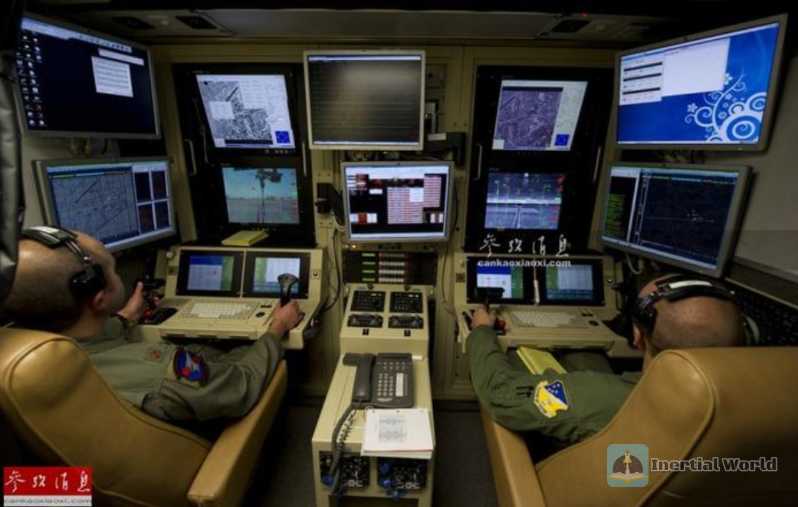
In terms of anti-ship, the Taiwan military believes that sea control operations are related to the survival of Taiwan, especially the control of the Taiwan Strait, the Bashi Strait and the northeastern waters of Taiwan Island. Controlling the Taiwan Strait can block our large-scale joint landing operations. Controlling the Bashi Channel and the northeastern waters of Taiwan Island will prevent our aircraft carrier battle group from moving back to the eastern waters of Taiwan, threatening Yilan, Hualien, Taitung and other places, and crushing our military’s strategic attempt to block the US military’s route to aid from Guam and Okinawa. However, relying on the old and backward ships of the Taiwan Navy is simply useless. They can only rely on the land-based US-made "Yuyou" and self-made "Hsiung Feng"-3/3 extended-range anti-ship missiles with a maximum range of 150-300 kilometers, which still have a little ability to "strike the enemy halfway across the river." In early November, the Taiwan military compiled a total of NT$166.3 billion in "anti-ship missile network" construction plans, which will add 15 shore-based anti-ship missile positions throughout Taiwan, NT$86.6 billion for the construction of 6 "Harpoon" missile positions, NT$79.7 billion for the construction of 9 "Hsiung Feng" missile positions, and will set up an anti-ship missile command in Qingshui, Taichung. It is planned to complete the project award by the end of the year and complete the construction and missile deployment tasks by 2026.
In terms of long-range attacks, "effective deterrence" and "preemptive strikes" are Taiwan’s established strategic policies. For many years, the Taiwan military has always emphasized "absolute offensiveism", "attack, attack, and attack again", "no attack means no security, no attack means no victory", and "before and during the enemy’s preparations for the attack on Taiwan and before and during the launch of the attack, carry forward the offensive spirit, take the initiative to take offensive operations, destroy the enemy’s landing combat preparations, and disrupt its combat deployment." Therefore, the extreme possibility that the Taiwan authorities fired the first shot at the instigation of the United States cannot be ruled out. At present, the Taiwan military’s long-range strike missiles include the self-made "Yunfeng" ballistic missiles and the "Hsiung Feng"-2E known as the "Little Tomahawk" and the extended-range "Hsiung Sheng" cruise missiles improved on its basis, with a maximum range of more than 1,000 kilometers, and even close to 2,000 kilometers. Some Taiwan independence politicians are like "chicken blood", openly clamoring to "strike Shanghai and Hong Kong". On June 12 last year, Yu Shyi-kun, one of the "Four Heavenly Kings" of Taiwan independence and former "Premier" of the Taiwan authorities and former chairman of the Democratic Progressive Party, openly declared that "the ’Yunfeng’ missile can hit Beijing". In addition, there are 29 sets of US-made M-142 "HIMARS" multiple rocket launcher systems and 64 matching MGM-140 tactical ballistic missiles ATACMS, which were ordered in two batches in 2021 and 2022, which have not yet arrived. The maximum range is 300 kilometers, which is very suitable for "repelling the enemy on the other side".
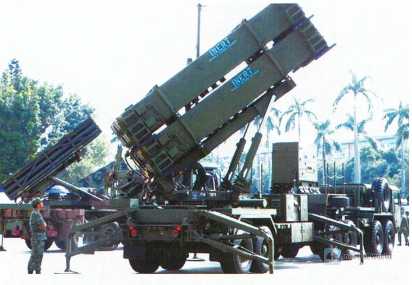
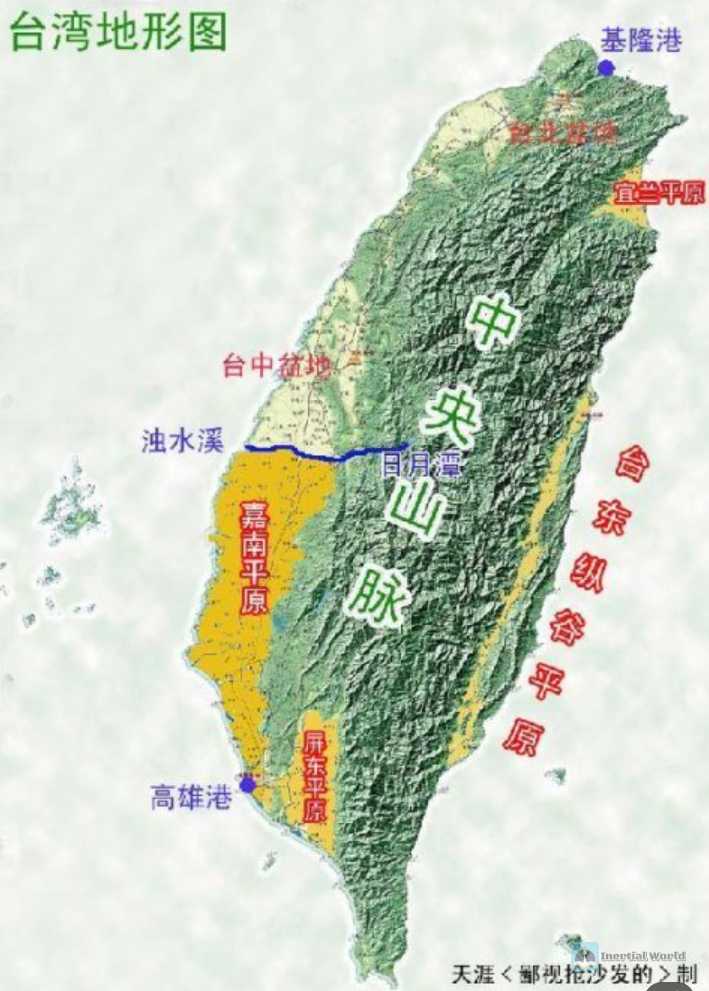
Therefore, ensuring the first wave of destruction of Taiwan’s medium- and long-range air defense missiles, land-based anti-ship missiles and long-range attack missile systems has become the top priority of our joint firepower assault of various military services. The key is to do enough intelligence reconnaissance work before the war. In addition to the extensive use of satellites, various professional manned reconnaissance aircraft and manpower intelligence collection, drones are the most perfect and cheapest technical means to obtain real-time information on moving targets. These American and Taiwanese heavy missile weapon systems do not have vertical launch capabilities. In the towns/residential areas on the island with high-rise buildings, it is difficult to find the firing range conditions that meet the launch conditions. They can only be launched obliquely on open terrain in the wild. Taiwan’s towns/residential areas occupy a large amount of flat land, and large areas of flat land in the wild that can meet the launch conditions are very scarce. In addition to occupying farmland to build launch positions in advance, there are basically not many options. Moreover, these missile system carriers are all heavy transport vehicles or extended trailers, which are huge in size and seriously lack off-road capabilities. They can only rely on road mobility. In addition to missile launchers, there are also supporting command, radar, communication, transportation, lifting, loading and other auxiliary vehicles. They move in a long line and stop in a large area. This means that their usual training positions and actual combat launch positions are usually located near the sides of the road not far from their bases. This provides very favorable conditions for our KVD-002 and other drones to quickly and accurately search for their traces. As long as we find their bases and keep a close eye on the traffic roads connecting their bases and the limited number of hardened large flat areas on both sides of the roads, we can basically catch them accurately.
In addition to reconnaissance and attack drones and armed helicopters, the most responsive and timely cross-sea firepower of our army is the PHL-03 and PHL-191 long-range rocket artillery firepower. The former uses 300mm precision-guided rockets, and the latter adopts a modular design and is compatible with the launch of 300, 370 and 750mm precision-guided rockets. In particular, the 750mm heavy rocket has technical performance comparable to ballistic missiles, and its firepower range completely covers the entire territory of Taiwan Island. It is the "trump card" of our army to strike the high-risk weapons of the Taiwan Army. However, the PHL-03/191 rocket artillery requires drones to provide it with target indication and guidance. Although it is equipped with a JWP-02 vehicle-mounted launch reconnaissance and guidance drone, the maximum range/flight time of this type of drone is very limited, and it is difficult to perform high-intensity cruise reconnaissance missions for a long time. Therefore, the army must rely on the KVD-002 large long-flight drone to continuously track and collect the training and deployment of the Taiwan Army’s high-risk weapons, and continuously update and improve the army’s long-range firepower target information database.

Improve the joint action plan for battlefield blockade
After the launch of the war of unification, our army will suppress the Taiwan military in all directions, including land, sea, air, space, electricity, and network, with electromagnetic warfare and network warfare as the forerunner and throughout the entire combat process, focusing on paralyzing the Taiwan military’s air defense, sea control, and preemptive counterattack combat systems, making the Taiwan military’s command, communication, reconnaissance, control, firepower, intelligence and other combat and support guarantee systems all become blind and deaf, unable to see, hear, shoot, or hit accurately. Cooperate with the implementation of information warfare, psychological warfare, legal warfare and other spiritual warfare means to completely destroy the Taiwan military’s combat will and resistance confidence. The rocket army’s ballistic/cruise/hyperbaric missiles, the air force’s air-to-ground missiles/precision-guided bombs, the navy’s anti-ship missiles/land-attack cruise missiles, and the army’s long-range rocket launchers/reconnaissance drones/attack helicopters and other military arms will combine their firepower to attack Taiwan’s airports, ports, command institutions, information hubs, radar stations, ammunition and oil depots, and logistics bases and other strategic and tactical targets, making all Taiwan’s fighters unable to take off, all warships unable to leave ports, and all long-range missile systems unable to fight back, thus achieving the goal of three-dimensional blockade in all time, air, sea, and regions.
UAVs participating in the full-domain blockade operation have advantages that are difficult to achieve over manned combat aircraft. Manned combat aircraft have a short air time, usually only 3-4 hours, which is completely not at the same level as large and medium-sized drones that can easily stay in the air for 30-40 hours. Continuous dispatch in multiple directions and multiple sorties can ensure that every point in the Taiwan Strait is under the control of drones at all times. KVD-002, TB-001, "Attack"-1/2 and stealth "Attack"-11 and other reconnaissance and strike drones can destroy as soon as they are discovered, and the blocking effect is better than that of simple reconnaissance drones. This time, the Army KVD-002’s first patrol of the Taiwan Strait was not a single action, but a joint operation with the Air Force TB-001 "Double-Tailed Scorpion" and other drones. The meaning of joint operations is very strong. Relying on peacetime joint patrols, the methods and procedures of joint reconnaissance, strikes, and blocking in wartime are continuously accumulated. In terms of patrol airspace, altitude, time and target differentiation, the coordinated action plan is further improved. Through high-speed data links, intelligence resources are shared in real time to jointly achieve the combat purpose of blocking the Taiwan Strait in all areas of the military services.
The Taiwan military has more than 90 AH--64E, AH-1W and OH-58D attack/reconnaissance helicopters, nearly 1,200 T-63 105mm howitzers, T-86 120mm mortars, M-109A2/A5 155mm self-propelled howitzers, M-110A2 203mm self-propelled howitzers, M-115 203mm fortress howitzers, and large-caliber artillery such as Gongfeng-6 and Leiting-2000 multiple rocket launchers, nearly 1,000 M-60A3.M-48H heavy tanks with a combat weight of more than 50 tons, and more than 1,000 CM-21 infantry fighting vehicles and M-113 armored personnel carriers. Although the combat performance of most of these heavy weapons has long fallen behind the requirements of modern high-tech information warfare, they are the main capital of the Taiwan military’s anti-landing and anti-air/airborne operations of "destroying the enemy on the beach and annihilating the enemy in the battle array" and "attacking the enemy before it is stable and encircling and annihilating the enemy locally". It is also a major threat faced by our army, marines and air force troops in three-dimensional landing and deep advancement, and therefore will become the key target of our military arms. Once our air force effectively seizes air supremacy on the battlefield, drones can "leap over the sea and let birds fly in the sky", dominate the sky over the Taiwan Strait at will, and it will be easy to sweep the Taiwan military’s heavy ground equipment and landing helicopters. The Nagorno-Karabakh war between Akanbaijan and Armenia from September to November 2020 has long proved this point. The Turkish-made TB-2 drones used by the Afghan army, whose combat performance is at least two generations behind our KVD-002, successfully destroyed more than a thousand pieces of main weapons and equipment of the Afghan army, including T-72 tanks, D-30 howitzers, BM-21 rocket launchers, S-300, "Buk", "Tor" M2KM air defense missiles, etc., causing the Afghan army to be in a passive position on the battlefield.
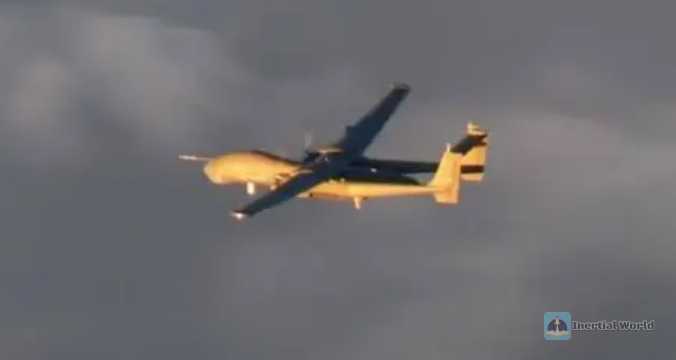
Preventing the leaders of Taiwan independence from fleeing, letting them accept the people and historical trials, or directly beheading them, so that justice can be served, is one of the important tasks of our army’s battlefield blockade. The leaders of Taiwan independence conduct several escape drills every year. The Taiwan military guard forces first dispatch "Clouded Leopard" wheeled armored vehicles to quickly transfer the leaders of Taiwan independence and major military and political officials from their residences/offices to the helicopter hideouts for transfer. In order to avoid being tracked by our reconnaissance and monitoring system, the helicopters fly at low and ultra-low altitudes and quietly escape to Japan or the Philippines. If the two countries dare not take them in, they will fly to the US military bases in Japan and the Philippines: or directly fly to the US warships cruising in the eastern waters of Taiwan Island. If the helicopter responsible for the transportation mission is destroyed by our army in advance, the leaders of Taiwan independence will flee by naval missile speedboats instead. The Taiwan Navy has built a large number of missile speedboats such as "Jinjiang" and "Guanghua No. 6" and "Tuojiang"/"Tajiang" class frigates. The Taiwan military believes that its navy’s 26 "Keelung", "Chenggong", "Jiyang" and "Kangding" class large surface warships and two "Hailong" class conventional submarines are all old ships that have been in service for 30 to 40 years. Once the People’s Liberation Army takes action, they will be wiped out in an instant. Small missile speedboats can maneuver covertly between more than 200 fishing ports and islands in Taiwan, Penghu, Kinmen and Matsu. The boats carry 2-4 "Hsiung Feng"-2/3 anti-ship missiles. Under the guidance of shore/island-based radars and drones, they use the "sea wolf pack" tactics to secretly leave the port, maneuver at high speed, and launch saturation attacks. They are a powerful weapon for conducting maritime guerrilla warfare in the case of losing air and sea control, and are also handy equipment for the escape mission of the Taiwan independence leaders.
The most suitable drone for decapitation operations is definitely the stealth-capable "Attack"-11 of the Air Force. It can easily penetrate the Taiwan military’s air defense network and silently cruise over Taipei for a long time, like a "Sword of Damocles" hanging high in the air. No one knows when it will suddenly show its power. As long as the enemy leader leaves the solid protection place, he will become a ghost under the knife of the "Attack"-11. It is effortless to destroy the "Clouded Leopard" wheeled armored vehicle and the helicopter before takeoff. This psychological deterrent effect that makes the leaders of Taiwan independence always nervous and terrified is unmatched by any other weapon. The Army’s KVD-002 reconnaissance and strike drone will undoubtedly work together with other Air Force drones, fighter jets and Navy surface ships to jointly blockade Taiwan Island and its surrounding waters. It can be equipped with air-to-ground missiles such as the Blue Arrow-7/AR-1/AKD-10 or AG-300M/L, and can kill heavily armored moving targets with one strike, let alone destroy the missile speedboat carrying the Taiwan independence leader.


